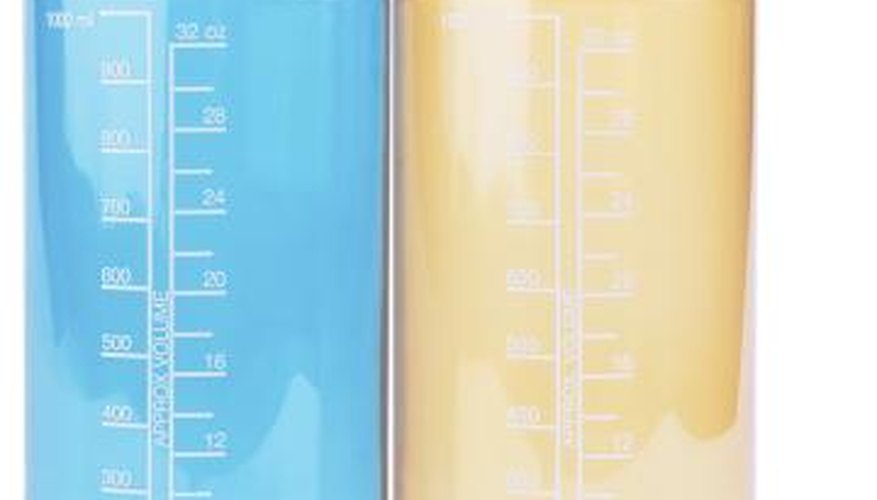Plastic containers are mainly used for food and storage and for home organisation. There are advantages and disadvantages to using plastic in your home. Depending on the task, plastic may or may not be the best option. Advantages of plastic include durability and cost. Disadvantages include longevity, plastic's ability to absorb flavours, and its environmental impact.
Durability
Plastic is durable, in that you can toss plastic containers from a distance and not worry about them breaking. It is designed to withstand a small amount of trauma. For example, if you take your lunch to work in a plastic container, it often gets thrown around in your bag without breaking. Similarly, if you use large plastic containers to store decorations or clothes in your home, you can place a few similarly weighted containers on top of each other without fear of the plastic container buckling. Thicker plastic, such as that found on home-storage containers, lasts longer than thinner, takeout containers.
- Plastic is durable, in that you can toss plastic containers from a distance and not worry about them breaking.
- Similarly, if you use large plastic containers to store decorations or clothes in your home, you can place a few similarly weighted containers on top of each other without fear of the plastic container buckling.
Cost
Plastic is cheaper than other common storage materials, such as glass, metal and wood. It is manufactured in great quantities, causing the overall cost of the this material to be low. Plastic is used in food storage because these containers are often damaged in everyday use and misplaced over time. There is a low cost associated with replacing these containers.
- Plastic is cheaper than other common storage materials, such as glass, metal and wood.
- There is a low cost associated with replacing these containers.
Longevity
Plastic degrades over time. The material is affected by excessive light, scratching, denting and cracking. If you leave plastic containers stacked with heavy items in them for a long period of time, the plastic will buckle and crack. For example, a glass container for food storage has a longer life than a plastic one, as long as the glass does not break.
- Plastic degrades over time.
- If you leave plastic containers stacked with heavy items in them for a long period of time, the plastic will buckle and crack.
Absorption of Flavors
Plastic, when used for food storage, absorbs the smells and tastes of items stored in them. Foods with strong flavours, such as curry, marinara sauce, tomato soup and garlic, tend to absorb into the containers more easily; the smell persists, even after the container is washed with soap. Materials, such as glass and metal, do not absorb flavours and are better to use with these foods.
Environmental and Health Impact
Plastic has a large impact on the environment. It is possible to recycle plastic, depending on your city's recycling system, but many people do not. Plastic is not biodegradable, which means it is not possible for the earth to naturally absorb this material back into the soil. Rather, the light breaks down the plastic into small pieces that contaminate the soil. It is expensive to manage and clean the toxicity that plastic creates. Recycling programs aim to get you to reduce the amount of items you use, reuse your containers and recycle what you can no longer use. Plastic can also adversely affect your health. Reusable water bottle companies, such as Nalgene and Camelback, have issued a new line of bottles that do not contain BPA (bisphenal A), a harmful chemical previously in the plastic.
- Plastic has a large impact on the environment.
- Plastic is not biodegradable, which means it is not possible for the earth to naturally absorb this material back into the soil.
